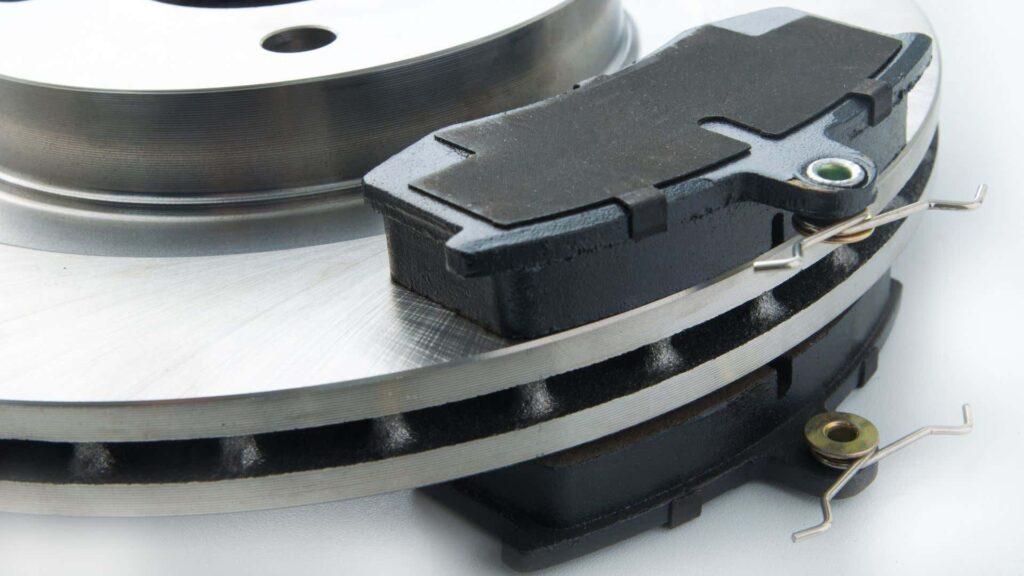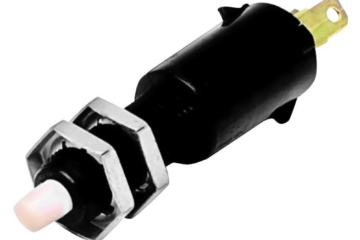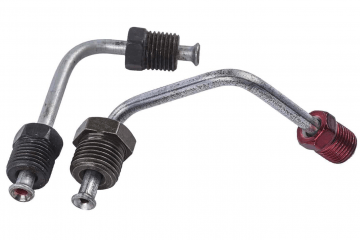Few components are more important than the brake system when it comes to car safety. Among its different components, brake pads play a critical role in ensuring that your car stops reliably and efficiently. Not all brake pads, however, are made equal. In this blog post, we’ll look at the many types of brake pads on the market and help you decide which one is ideal for your vehicle.
- Organic Brake Pads:
- Material: Organic brake pads are typically made from a blend of organic materials like rubber, glass, and resins. They are known for being environmentally friendly.
- Advantages: They are generally quiet and provide smooth braking performance. They are also easy on the rotors, making them a good choice for everyday driving.
- Disadvantages: Organic brake pads may wear out more quickly than other types and can produce more brake dust.
Here are some organic brake pad brands: - Zimmermann
- Semi-Metallic Brake Pads:
- Material: Semi-metallic brake pads are made from a mixture of metals such as copper, iron, and steel, along with organic materials.
- Advantages: They offer excellent stopping power, making them suitable for high-performance and heavy-duty applications. If you are an aggressive driver, you will need semi-metallic brake pads that can handle the heat and friction generated by hard braking.
- Disadvantages: They can be noisy and may generate more brake dust. They may also wear the rotors more quickly.
Climate: If you live in a cold climate, you will need semi-metallic brake pads that can perform well in cold weather.
Here are some of the most popular semi-metallic brake pad brands:
- Ceramic Brake Pads:
- Material: Ceramic brake pads are composed of ceramic fibers, non-ferrous filler materials, and bonding agents.
- Advantages: Ceramic brake pads are known for their low noise, minimal dust production, and excellent heat dissipation. They provide consistent braking performance.
- Disadvantages: They can be more expensive than other types of brake pads.
There are several reputable brands that manufacture ceramic brake pads, known for their durability, reduced dust production, and consistent braking performance.
Here are some well-known ceramic brake pad brands:
- Akebono: Akebono is a respected name in the brake pad industry and is known for producing high-quality ceramic brake pads that offer excellent performance and low dust.
- Wagner: Wagner’s ceramic brake pads are known for their reliability and consistent stopping power. They are a popular choice for many vehicles.
- Bosch: Bosch offers a range of ceramic brake pads designed for various vehicles. They are known for their durability and performance.
- Hawk Performance: Hawk Performance specializes in high-performance ceramic brake pads designed for enthusiasts and those seeking improved braking performance.
- Power Stop: Power Stop offers ceramic brake pads that are engineered for optimal performance and longevity. They are often used for both daily driving and occasional track use.
- Centric Parts: Centric Parts is a trusted manufacturer of ceramic brake pads known for their quality and value.
- ACDelco: ACDelco produces ceramic brake pads that are designed to meet or exceed OE (original equipment) standards, making them suitable for a wide range of vehicles.
- TRW: TRW Automotive manufactures ceramic brake pads known for their reliability and consistent performance.
TEC-Ceramic Brake Pads are made from a high-density ceramic formula that provides excellent stopping power and quiet operation. They are also resistant to fade and dust, making them a good choice for both daily driving and performance applications.
CMX-good option for drivers who are looking for a reliable and affordable brake pad. They offer good performance and durability, and they are relatively quiet and low-dust.
AmeriBrakes-are designed to provide good stopping power and pedal feel. They are made with high-quality materials and are designed to last.
When selecting ceramic brake pads for your vehicle, it’s essential to consider factors such as your vehicle’s make and model, your driving habits, and any specific performance requirements. Reading customer reviews and consulting with a trusted mechanic can also help you choose the right brand and product for your needs.
- Low-Metallic Brake Pads:
- Material: Low-metallic brake pads contain a small percentage of metal, usually copper or steel, mixed with organic materials.
- Advantages: They offer good stopping power and heat dissipation. They are often used in performance-oriented and high-stress driving scenarios.
- Disadvantages: They may generate more noise and dust than ceramic pads.
Here are some low-metallic brake pad brands:
- Raybestos
- Wagner
- Bosch
Choosing the Right Brake Pad
Selecting the right brake pad depends on your vehicle type, driving style, and intended use. Here are some considerations:
- Daily Driving: For everyday commuting and regular driving, organic or ceramic brake pads are often suitable due to their quiet operation and balanced performance.
- High-Performance Driving: If you have a sports car or enjoy spirited driving, semi-metallic or low-metallic brake pads might provide the enhanced stopping power and heat resistance you need.
- Environmental Concerns: If you prefer eco-friendly options, consider organic or ceramic brake pads as they produce less dust and are less harmful to the environment.
- Budget: Your budget is also a factor. Ceramic brake pads, while quieter and cleaner, tend to be pricier than organic or semi-metallic pads.

Conclusion
Your choice of brake pads can significantly impact your vehicle’s safety and performance. Understanding the different types of brake pads and their characteristics is essential for making an informed decision. Consult your vehicle’s manual and consider your driving needs when selecting the right brake pads for your car. Regular maintenance and timely replacement of brake pads are crucial for safe and reliable braking performance on the road.



